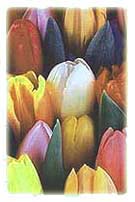The floriculture industry The floriculture industry comprises of:
The area under flower crops is around 53,000 acre. Of the total area more than half is under traditional crops jasmine, scented rose, small flowered chrysanthemum, tuberose, crossandra and aster. The annual growth rate of domestic trade in floriculture products is estimated to be 15-20%. Consumption of flowers in the southern States is much higher than in the northern States. During the last few years there has been drastic change in flower trade of modern flowers in Bombay, Pune, Bangalore, Chennai, Hyderabad, Delhi, Chandigarh, Lucknow and Calcutta. A major growth, of course, has been in the production of cut flowers for exports. More than 150 export-oriented units (EQUs) have been approved by the Government and are coming up in different parts of the country, particularly around Pune, Chandigarh, Bangalore, Delhi and Hyderabad. Some of them have started in full production and have started exporting their products. A majority of these are being set up with the collaboration of foreign technology and infrastructural support. A modest estimate of investment made in this sector is around Rs.1,500 crores so far, of which Rs.55 crores is in foreign investment (as up to June 1995). All this growth is a recent phenomenon following introduction of economic liberalisation in 1991, which makes the growth look quite significant. |
Ag.
Technologies
(Floriculture)
